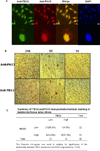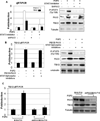TBX2 expression is regulated by PAX3 in the melanocyte lineage
- PMID: 23020925
- PMCID: PMC3527652
- DOI: 10.1111/pcmr.12029
TBX2 expression is regulated by PAX3 in the melanocyte lineage
Abstract
The paired box homeotic gene 3 (PAX3) is a crucial regulator for the maintenance of melanocytic progenitor cells and has a poorly defined role in melanoma. To understand how PAX3 affects melanocyte and melanoma proliferation, we identified potential PAX3 downstream targets through gene expression profiling. Here, we identify T-box 2 (TBX2), a key developmental regulator of cell identity and an antisenescence factor in melanoma, as a directly regulated PAX3 target. We also found that TBX2 is involved in the survival of melanoma cells and is overexpressed in some melanoma specimens. The identification of TBX2 as a target for PAX3 provides a key insight into how PAX3 may contribute to melanoma evolution and may provide opportunities for prosenescence therapeutic intervention aimed at disrupting the ability of PAX3 to regulate TBX2.
© 2012 John Wiley & Sons A/S.
Conflict of interest statement
No potential conflicts of interest were disclosed.
Figures






References
Publication types
MeSH terms
Substances
Grants and funding
LinkOut - more resources
Full Text Sources

